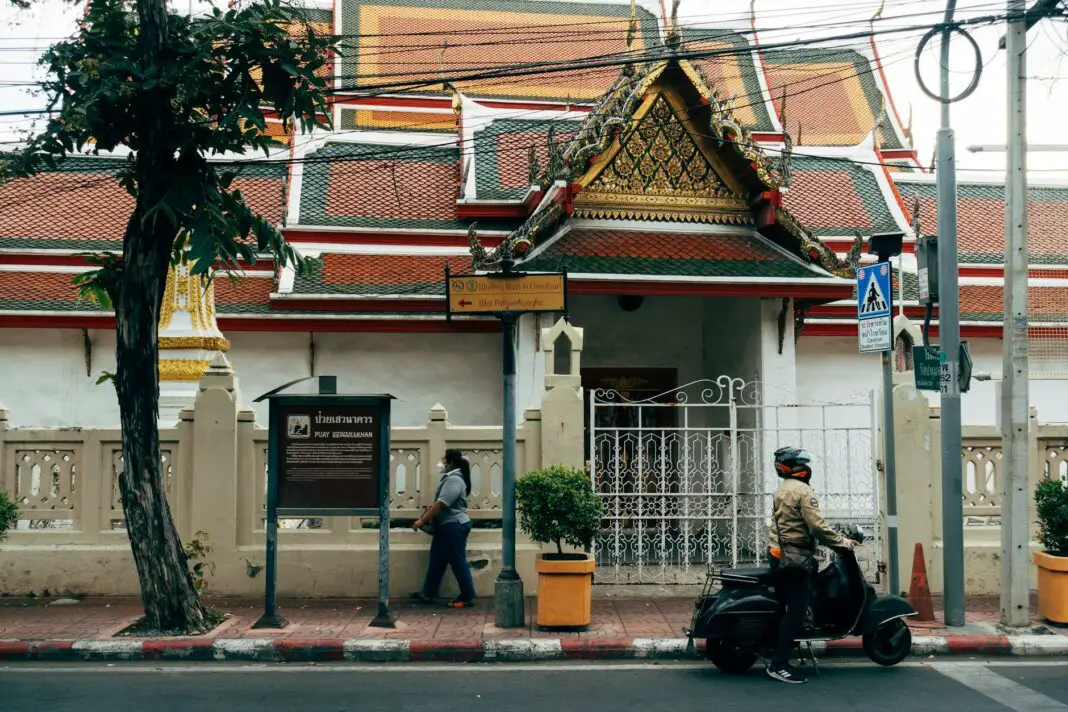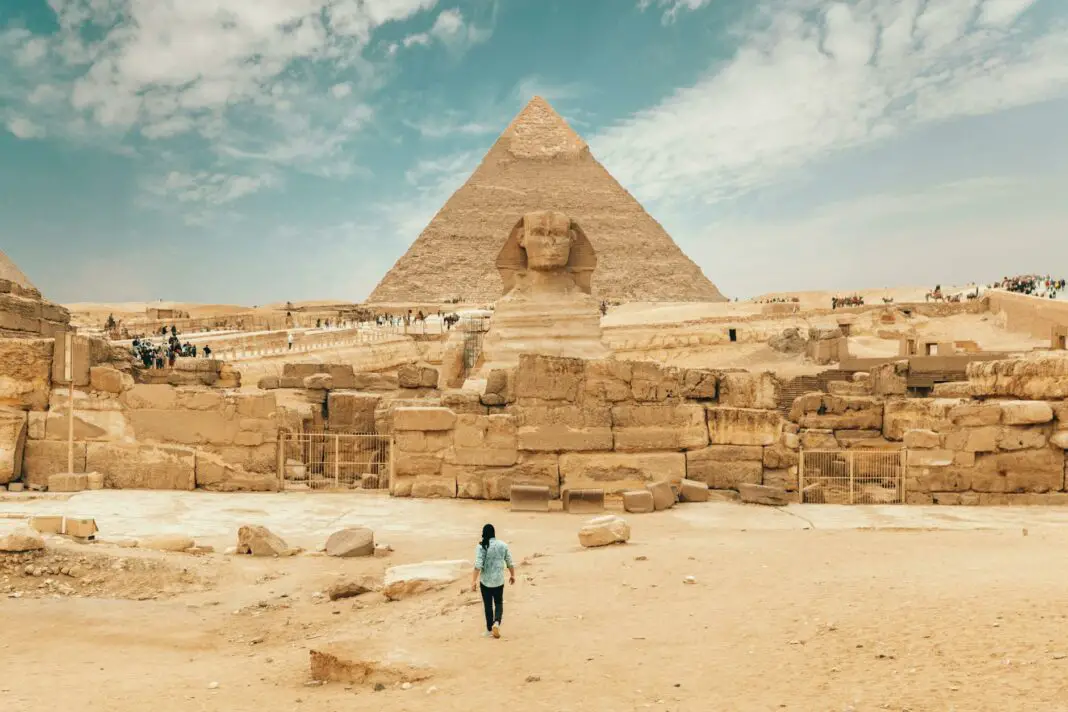Thailand, a jewel in Southeast Asia, is renowned for its breathtaking landscapes, vibrant street food, and warm-hearted people. This beautiful country is also steeped in history, particularly showcased through its enchanting ancient temples. As visitors traverse the lush expanse of Thailand, they inevitably find themselves captivated not only by the stunning architecture of these temples but also by the compelling stories they tell. Exploring these sacred sites offers a glimpse into the rich cultural tapestry that has shaped Thailand over the centuries.
In this blog post, we’ll delve deep into the magnificence of Thailand’s ancient temples and uncover the historical narratives that lie within their walls. Are these structures merely beautiful edifices, or do they hold the key to understanding Thailand’s storied past? Together, let’s navigate through this captivating landscape, revealing the hidden treasures and profound insights that await discerning minds.
Table of Contents
- The Legacy of Ancient Temples
- Understanding the Historical Significance
- Must-Visit Temples in Thailand
- Cultural Importance of Temples
- Experiential Tips for Visitors
- Inspired Journey Ahead
- Frequently Asked Questions
The Legacy of Ancient Temples
The ancient temples of Thailand are more than just places of worship; they are storied monuments that encapsulate the evolution of Thai civilization. Dating back centuries, these temples reflect the influences of various dynasties, each leaving their unique mark on architecture and art. For instance, the intricate carvings found in Ayutthaya and Sukhothai temples provide insights into the artistic skills and spiritual beliefs of the time. Additionally, each temple tells a story that weaves together the threads of religion, culture, and history.
Moreover, many structures are adorned with magnificent murals and sculptures that narrate mythological tales or significant historical events. This legacy is a testament to the craftsmanship of the artisans who created them, not only aiming to serve a religious function but also to reflect the society’s core values. The rich diversity within these temples reveals the synthesis of local beliefs with influences from neighboring regions, creating a captivating panorama of Thailand’s cultural evolution.
Understanding the Historical Significance
Thailand’s history is inextricably linked with its temples, which serve as physical embodiments of significant historical events. The evolution of Buddhism in Thailand has played a pivotal role in shaping the nation’s identity, with temples acting as centers for spiritual education and community gatherings. Take for instance Wat Phra Kaew in Bangkok, which houses the revered Emerald Buddha. This temple has been a significant site for royal ceremonies and continues to draw visitors who come to pay their respects.
Furthermore, each temple has been a witness to the ebb and flow of Thailand’s tumultuous history, from wars to peace treaties. For example, the iconic Wat Chaiwatthanaram in Ayutthaya is a poignant reminder of the city’s former glory and its eventual decline during the Burmese invasion. Walking through these ancient halls, it becomes clear that the stones whisper stories of resilience, faith, and transformation, urging visitors to reflect on their historical journey.
Must-Visit Temples in Thailand
For anyone eager to explore the depth of Thailand’s ancient history, certain temples stand out as essential destinations. Firstly, Wat Pho is renowned not just for its stunning architecture but also for housing the famous Reclining Buddha, an image that encapsulates the essence of peace and enlightenment. Then, there is Wat Arun, also known as the Temple of Dawn, with its stunning spires that create a breathtaking silhouette against the sunrise.
Additionally, no visit would be complete without experiencing the ethereal beauty of Wat Phra Kaew, where visitors can immerse themselves in the spiritual atmosphere while marveling at exquisite art and intricate designs. Moreover, the lesser-known but equally captivating Wat Mahathat in Ayutthaya, where visitors can find the famous Buddha head entwined in tree roots, resonates deeply with those seeking unique, off-the-beaten-path experiences. Each of these temples offers more than just visual splendor; they provide engaging narratives that connect visitors with Thailand’s vibrant past.
Cultural Importance of Temples
Temples in Thailand are integral to more than just the religious landscape; they play a crucial role in the cultural fabric of society. These sacred spaces foster social activities and community bonding, as festivals and ceremonies are frequently held within temple grounds. For instance, the Loi Krathong festival, celebrated in November, sees participants releasing beautifully decorated floating baskets on water as a gesture of gratitude, infusing ancient traditions with contemporary practices.
Moreover, temples serve as educational venues where monks impart wisdom and spiritual knowledge to the community, creating a strong bond that transcends generations. Visitors often find that engaging with local customs, such as meditation or participating in temple volunteer activities, deepens their appreciation of Thai culture. The emblematic role of temples in Thai society underscores their vitality beyond mere historical significance, resonating with current social practices, and enveloping visitors in an authentic cultural experience.
Experiential Tips for Visitors
When planning a trip to explore Thailand’s ancient temples, a few practical tips can enhance the overall experience. Start by researching local customs and dress codes; many temples require modest attire, so packing a scarf or sarong may come in handy. Additionally, inquire about guided tours led by knowledgeable locals. These guides can offer fascinating insights, making the visit more enriching and immersive as they recount historical anecdotes and spiritual meanings behind the structures.
Moreover, consider visiting during the early morning hours or late afternoon. These times not only offer milder weather but also a more serene atmosphere, allowing visitors to truly connect with the spiritual essence of the temples. Engage in mindful practices such as meditation or journaling during your visit, fostering a personal connection to the surroundings. Keeping an open mind and a curious heart leads to discovering hidden aspects of Thai culture and history that are sure to leave an indelible mark on your journey.
Inspired Journey Ahead
Embarking on a journey through Thailand’s ancient temples is an invitation to explore the heart and soul of the nation. Each temple serves as a portal to the past, revealing stories that shape the present and illuminate the future. By embracing the essence of these ancient structures, travelers become participants in a larger narrative, transcending time and culture. Thailand invites you not just to visit but to truly immerse yourself in this beautiful tapestry woven with faith, artistry, and vibrant human connections.
Ultimately, the journey through Thailand’s temples is more than a travel experience; it is an awakening of the senses and spirit. Travelers leave with a profound appreciation for the resilience of culture and the power of faith to shape human lives throughout history. Prepare yourself for a journey that transcends mere sightseeing and emerges into a deeply transformative experience that resonates in the heart long after returning home.
Frequently Asked Questions
- What is the best time to visit Thailand’s ancient temples?
The best time to explore Thailand is during the cool dry season, from November to February, when the weather is pleasant and ideal for temple tours. - Are there any dress codes for visiting temples?
Yes, modest attire is required in temples. This often includes covering shoulders and knees. It’s advisable to wear lightweight clothing that respects local customs. - Which temple is the most significant in Thailand?
Wat Phra Kaew in Bangkok is considered one of the most significant temples due to its historical importance and the presence of the Emerald Buddha. - Can I take photographs inside the temples?
Photography policies differ from temple to temple. Generally, you can take photos in outer areas but may be restricted inside certain sacred spaces. - How can I participate in local traditions while visiting temples?
Engaging with monks, participating in meditation sessions, or attending local festivals can offer unique insights into Thai spiritual practices.
Image Credit: Pexels





